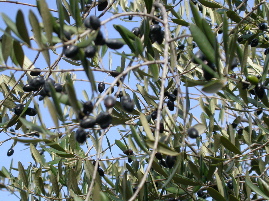Herrera, C.M., Jordano, P., Guitián, J. y Traveset, A. 1998. Annual variability in seed production by woody plants and the masting concept: reassessment of principles and relationship to pollination and seed dispersal. American Naturalist 152: 576-594.
 By
analyzing 296 published and unpublished data sets describing
annual variation in seed output by 144 species of woody plants,
this article addresses the following questions. Do plant species
naturally fall into distinct groups corresponding to masting and nonmasting
habits? Do plant populations generally exhibit significant bimodality in
annual seed output? Are there significant relationships between annual
variability in seed production and pollination and seed dispersal modes,
as predicted from economy of scale considerations? We failed to identify
distinct groups of species with contrasting levels of annual variability
in seed output but did find evidence that most polycarpic woody plants
seem to adhere to alternating supra-annual schedules consisting of either
high or low reproduction years. Seed production was weakly more variable
among wind-pollinated taxa than animal-pollinated ones. Plants dispersed
by mutualistic frugivores were less variable than those dispersed by either
inanimate means or animals that predominantly behave as seed predators.
We conclude that there are no objective reasons to perpetuate the concept
of mast fruiting in the ecological literature as a shorthand to designate
a distinct biological phenomenon. Associations between supra-annual variability
in seed output and pollination and seed dispersal methods suggest the existence
of important reproductive correlates that demand further investigation.
By
analyzing 296 published and unpublished data sets describing
annual variation in seed output by 144 species of woody plants,
this article addresses the following questions. Do plant species
naturally fall into distinct groups corresponding to masting and nonmasting
habits? Do plant populations generally exhibit significant bimodality in
annual seed output? Are there significant relationships between annual
variability in seed production and pollination and seed dispersal modes,
as predicted from economy of scale considerations? We failed to identify
distinct groups of species with contrasting levels of annual variability
in seed output but did find evidence that most polycarpic woody plants
seem to adhere to alternating supra-annual schedules consisting of either
high or low reproduction years. Seed production was weakly more variable
among wind-pollinated taxa than animal-pollinated ones. Plants dispersed
by mutualistic frugivores were less variable than those dispersed by either
inanimate means or animals that predominantly behave as seed predators.
We conclude that there are no objective reasons to perpetuate the concept
of mast fruiting in the ecological literature as a shorthand to designate
a distinct biological phenomenon. Associations between supra-annual variability
in seed output and pollination and seed dispersal methods suggest the existence
of important reproductive correlates that demand further investigation.
| Photo: Ripe fruits of Olea europaea var. sylvestris, a masting, fleshy-fruited species. |